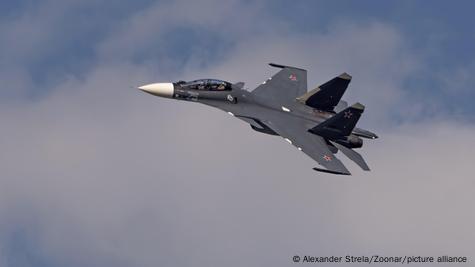Russian Jets Enter NATO Airspace Near Lithuania: A Rising Concern

Introduction
The recent incursions of Russian jets into NATO airspace, particularly near Lithuania, have sparked significant concerns among NATO allies regarding regional security and defense readiness. As tensions between Russia and NATO escalate, understanding the implications of these flights becomes crucial for safeguarding the integrity of allied airspace and maintaining peace in Eastern Europe.
Incidents Reported
According to NATO reports, Russian military aircraft have repeatedly entered the airspace of Lithuania without prior notification, raising alarms about potential breaches of international norms. NATO’s Baltic Air Policing mission, which operates continuously in the region, has responded to several such incidents by scrambling fighter jets to intercept and identify the Russian aircraft. In one notable incident last week, two Su-30 fighter planes were detected entering international airspace close to Lithuanian airspace, prompting swift action from NATO assets based in the region.
Reactions from NATO and Lithuania
The Lithuanian government has condemned these incursions, asserting that they threaten regional stability and security. Defence Minister Arvydas Anušauskas stated, “Such actions by Russia are not only provocative but also undermine trust in international relations.” NATO has reaffirmed its commitment to protecting its member states, particularly those located on the eastern flank. NATO Secretary-General Jens Stoltenberg emphasized the necessity for a united response, stating, “We will continue to bolster our presence in the region to ensure the safety and security of our NATO allies.”
Regional Implications
The airspace violations reflect broader geopolitical tensions following Russia’s ongoing military activities in Ukraine and its efforts to assert dominance in the region. Analysts suggest that these maneuvers are part of a strategy to test NATO’s resolve and response capabilities. The implications of these actions extend beyond airspace violations; they exacerbate fears of a potential escalation in military confrontations in Eastern Europe, prompting NATO to consider enhancing its military posture in the Baltic Sea region.
Conclusion
As Russian jets continue to breach NATO airspace near Lithuania, the alliance faces pressing challenges in ensuring air safety and regional stability. The situation calls for vigilance and preparedness among NATO allies while engaging in diplomatic efforts to mitigate rising tensions. The cooperation among member states remains vital for deterring future incidents and maintaining peace in the region. Looking ahead, the continued presence of NATO forces in Eastern Europe will likely increase as the alliance seeks to respond effectively to any threats posed by Russia.









